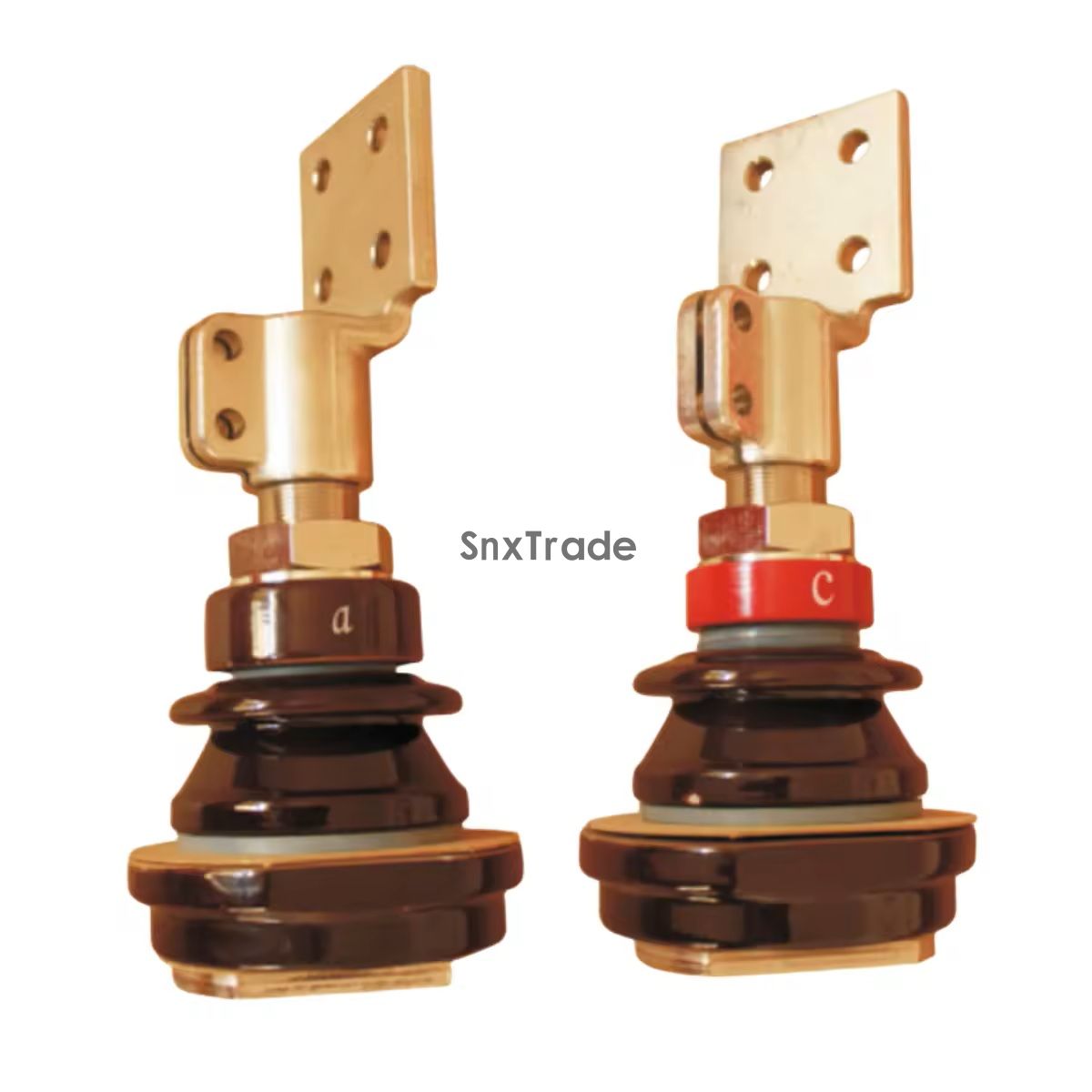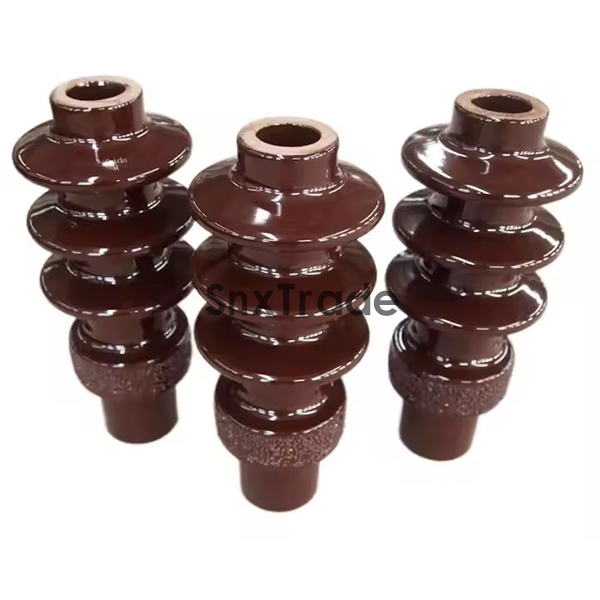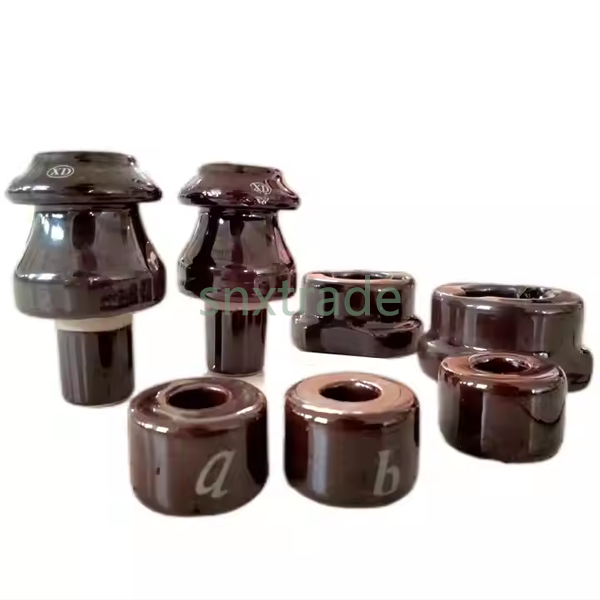The ceramic insulator of transformer bushing mainly has two core functions. It undertakes the important task of electrical insulation, effectively isolating the high voltage inside the transformer from external grounding components, avoiding breakdown and discharge phenomena, and ensuring safe conduction of current within the specified path. It also provides mechanical support for the conductive rod to withstand environmental loads such as electric force, gravity, wind, and earthquakes, ensuring
Classification and Technical Characteristics
According to different voltage levels and insulation designs, it can be mainly divided into the following three categories:
Pure ceramic bushing: suitable for voltage levels of 10kV and below, using air insulation method, that is, the conductive rod passes through the ceramic interior. It has a simple structure and low cost, mainly relying on the umbrella skirt design on the surface of the ceramic body to improve insulation strength, and is widely used in scenarios such as distribution transformers and low-voltage power equipment.
Oil filled porcelain bushing: used for 35kV level, with insulation method of filling oil inside the porcelain bushing and wrapping the conductive rod with insulation paper. This type utilizes a composite insulation of insulating oil and oil paper, effectively improving the voltage resistance performance, but requires a reliable sealing structure to prevent oil leakage, mainly used in medium voltage power transformers.
Capacitive porcelain bushing: suitable for high voltage levels of 100kV and above, using a combination of ceramic and capacitor core (aluminum foil and insulation paper layered) insulation method. The problem of uneven electric field distribution under high voltage is well solved through the voltage equalization design of capacitor cores, which requires extremely high insulation accuracy and is commonly used in high-voltage transmission transformers, ultra-high voltage equipment, etc.
Material characteristics and technical requirements
Ceramic materials: High purity alumina (Al ₂ O3) ceramics or talc ceramics are commonly used. These materials have high insulation strength, breakdown voltage ≥ 30kV/mm, and can maintain good insulation performance under high voltage; Has excellent temperature resistance, can withstand temperature fluctuations from -40 ℃ to+120 ℃, and prevent cracking due to thermal expansion and contraction; The surface glaze layer is smooth and dense, with strong anti pollution ability, which can reduce the risk of flashover caused by dust and rainwater adhesion.
Key technical indicators include creepage distance (≥ 31mm/kV), mechanical bending strength (≥ 150MPa), sealing performance (requiring long-term no leakage), etc. These indicators are important guarantees for ensuring the normal operation of insulators.










